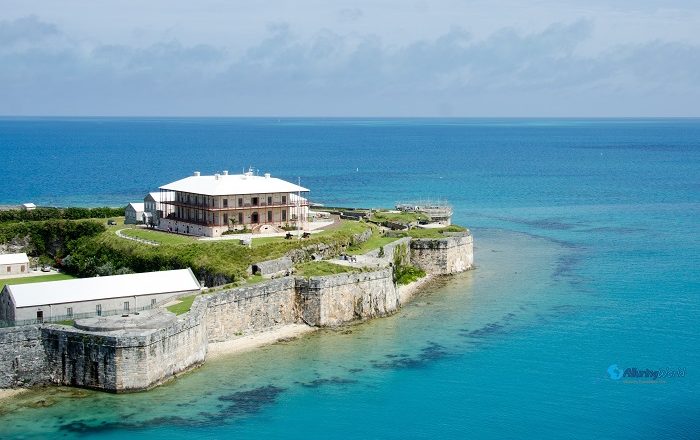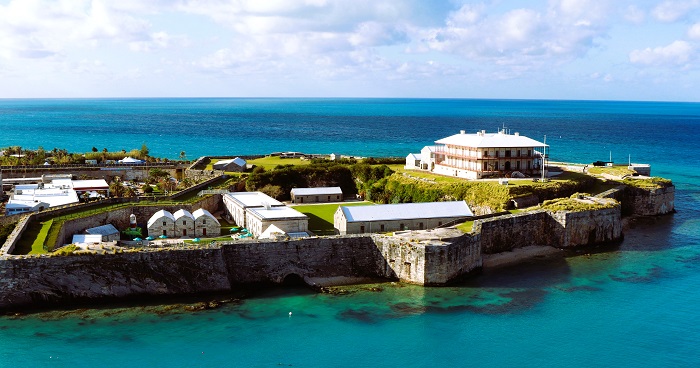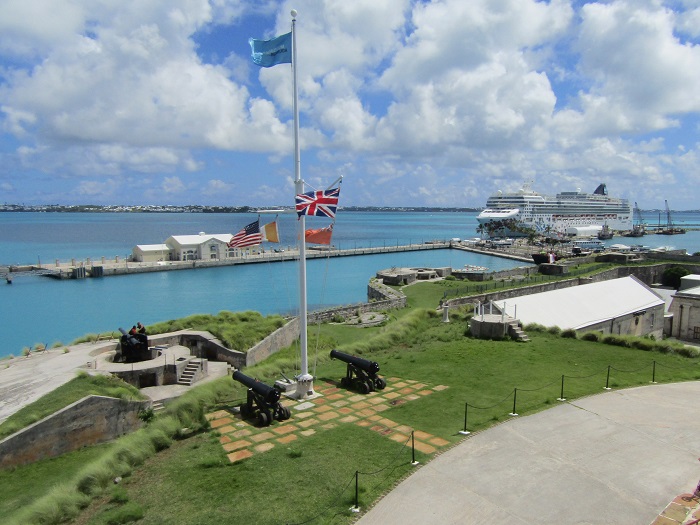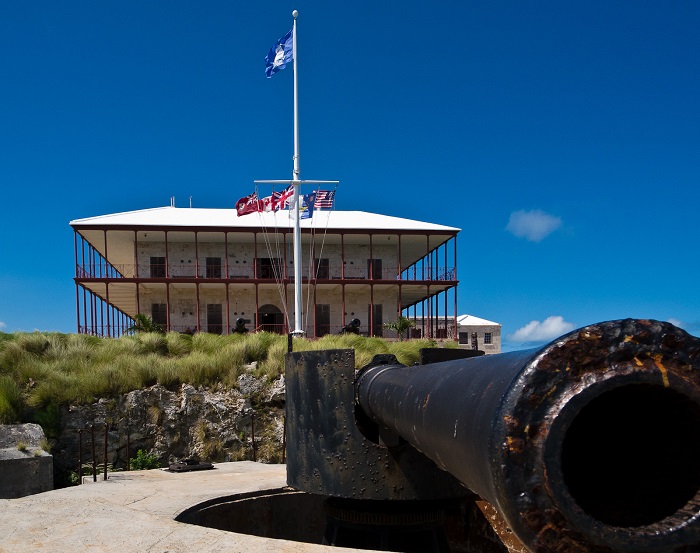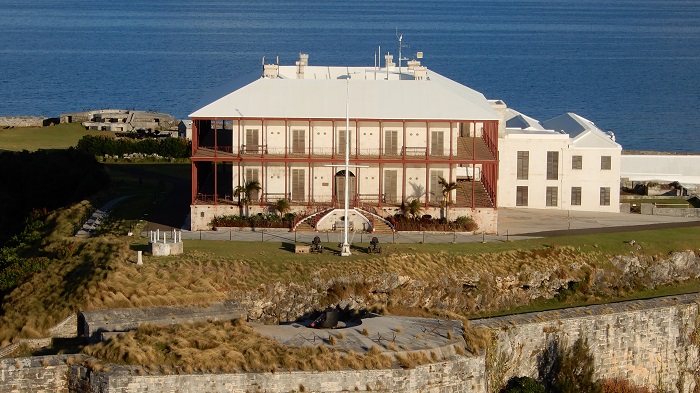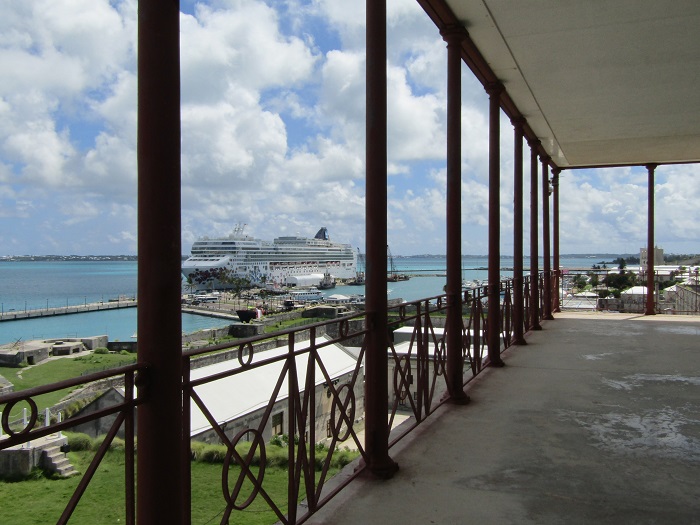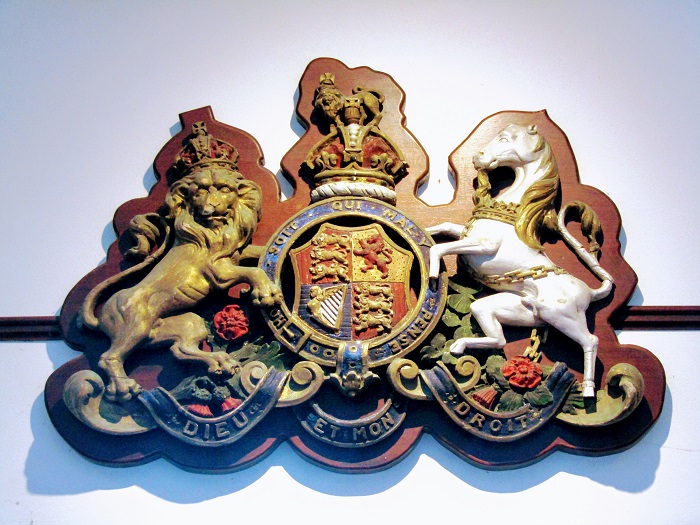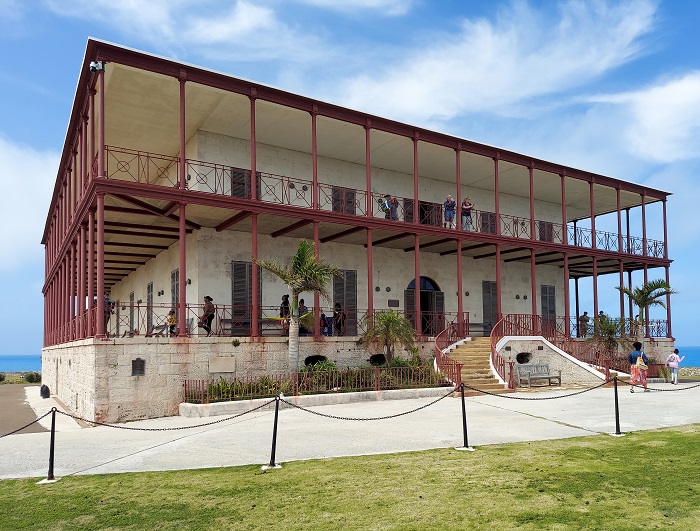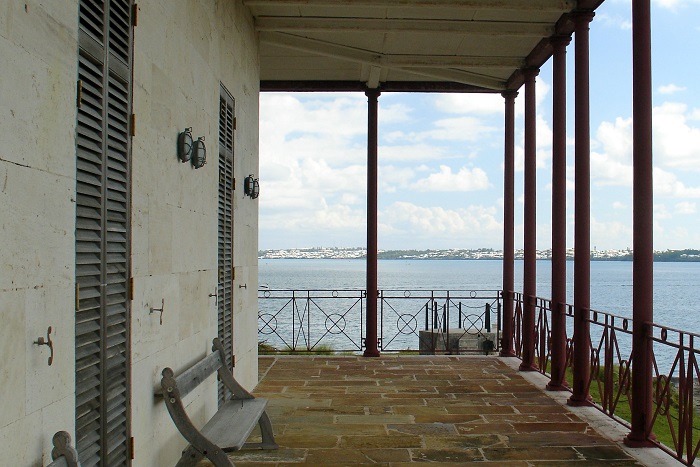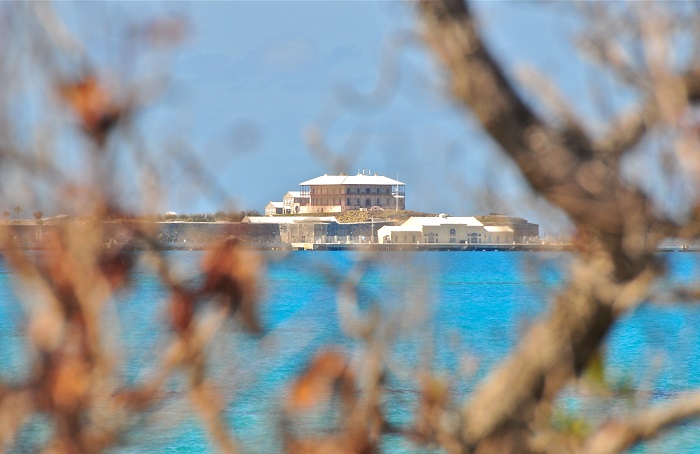The Commissioner’s House is a remarkable example of Georgian architecture and a significant piece of the island’s colonial history it is located within the historic Royal Naval Dockyard in the Sandys Parish of Ireland Island, within the southwestern part of the British Overseas Territory in the North Atlantic Ocean, Bermuda. Perched on a hill overlooking the Great Sound, this grand structure is a testament to Bermuda’s strategic importance during the 19th century, and the house is a key attraction within the Royal Naval Dockyard, drawing visitors from around the world to explore its rich history, stunning views, and well-preserved architecture.
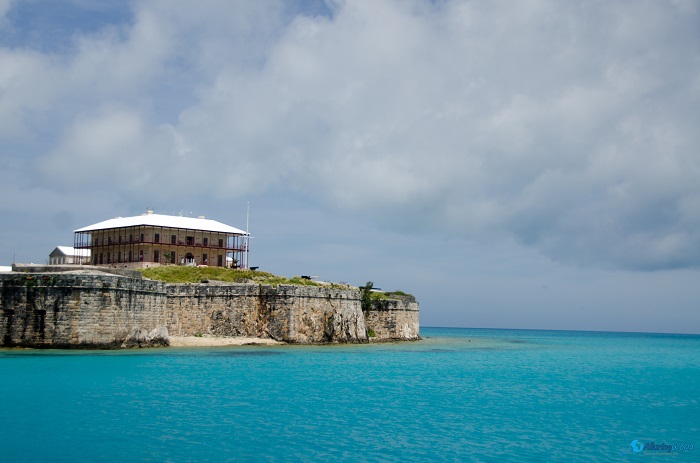
The construction of the Commissioner’s House began in 1823 and was completed in 1827, making it one of the oldest cast-iron buildings in the world. It was designed by Edward Holl, the Surveyor of the Navy, and was built using prefabricated cast-iron components, which were shipped from England and assembled on-site. This innovative construction method was revolutionary at the time, allowing for a more durable and fire-resistant structure compared to traditional wooden buildings, as the house was intended to serve as the residence for the Commissioner of the Royal Naval Dockyard, who was responsible for overseeing the dockyard’s operations and ensuring the defense of the British Empire’s interests in the North Atlantic.
The significance of the Commissioner’s House extends beyond its architectural innovation because, during the 19th century, Bermuda was a critical naval base for the British Empire, especially after the American Revolution when Britain lost its ports along the eastern seaboard of the United States. The Royal Naval Dockyard, with the Commissioner’s House as its centerpiece, played a vital role in maintaining British naval dominance in the Atlantic, as the house served not only as a residence but also as a symbol of British authority and engineering prowess in the region.
Over the years, the Commissioner’s House has witnessed many historical events and changes in Bermuda’s society, where during the height of its use, the house was a hub of activity, hosting important meetings and events related to the dockyard’s operations, however, as the strategic importance of Bermuda diminished over time, the house, like much of the dockyard, fell into disrepair. By the mid-20th century, the Commissioner’s House was abandoned and left to the elements, suffering from decades of neglect.
To preserve this important piece of history, the restoration of the Commissioner’s House began in the 1980s, spearheaded by the Bermuda Maritime Museum, now known as the National Museum of Bermuda. This extensive restoration project aimed to preserve the house’s historical significance while transforming it into a museum and cultural center, and as the restoration was completed in 2000, today the Commissioner’s House stands as a beautifully restored monument to Bermuda’s naval history, in addition to being part of the National Museum of Bermuda, housing a variety of exhibits that explore the island’s maritime history, colonial past, and cultural heritage.
Visitors to the Commissioner’s House can explore its many rooms and galleries, which feature exhibits on topics such as Bermuda’s role in the transatlantic slave trade, the history of the Royal Naval Dockyard, and the island’s rich maritime traditions. The house also boasts spectacular views of the Great Sound and the surrounding dockyard, offering a unique perspective on Bermuda’s natural beauty and historical significance. Still, one of the museum’s highlights is the stunning mural by local artist Graham Foster, which covers the entire interior of the house’s central staircase and depicts the history of Bermuda from its early settlement to the present day.
The Commissioner’s House can be visited year-round as part of the National Museum of Bermuda, which is open daily from 9:30 to 17:00. As mentioned before the museum is located within the Royal Naval Dockyard, which is easily accessible by public transportation, including buses and ferries from Hamilton, the capital of Bermuda, which is approximately 20 km (12 mi) away. For those arriving by cruise ship, the dockyard is a popular stop, with the museum being just a short walk from the cruise terminal, and visitors can also reach the dockyard by car or taxi, with ample parking available on-site.
In addition to its historical exhibits, the Commissioner’s House hosts various events and educational programs throughout the year, making it a dynamic and engaging destination for visitors of all ages. The house and surrounding grounds are also available for private events, including weddings and corporate functions, offering a unique and picturesque setting for special occasions.
The importance of the Commissioner’s House today lies not only in its historical value but also in its role as a cultural and educational resource. The house stands as a symbol of Bermuda’s rich history and connection to the broader story of the British Empire. Through its preservation and transformation into a museum, the Commissioner’s House continues to educate and inspire visitors, ensuring that the legacy of Bermuda’s naval past is not forgotten.
For those planning a visit to Bermuda, the Commissioner’s House and the Royal Naval Dockyard are must-see destinations because the combination of history, architecture, and stunning views makes this attraction a captivating experience for history enthusiasts, architecture buffs, and anyone interested in exploring the unique heritage of this beautiful island. Whether you are strolling through the meticulously restored rooms, enjoying the panoramic views of the harbor, or learning about Bermuda’s complex and fascinating past, visiting the Commissioner’s House is a highlight of your trip to Bermuda.

